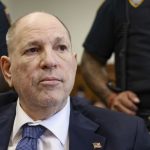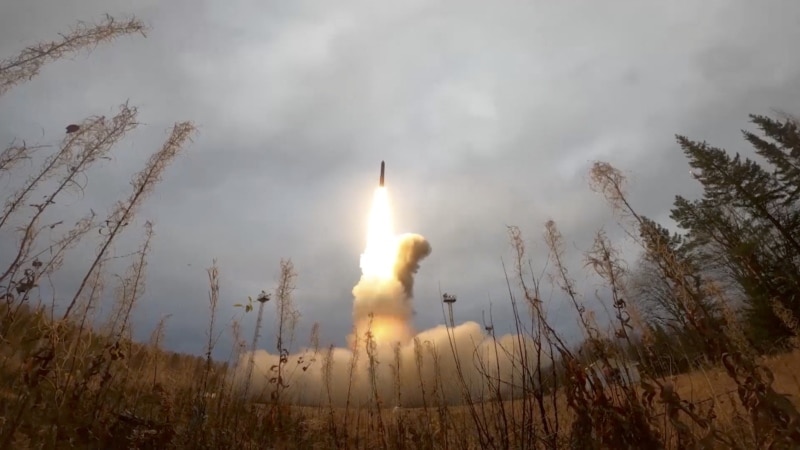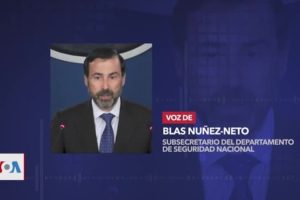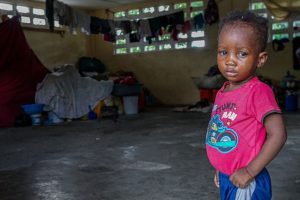Anxiety is mounting as Americans digest Russia’s nuclear threats in the war against Ukraine, even beyond the front lines. Some think -according to public opinion studies- that humanity is headed for a Third World War.
The possibility that Russia will escalate its war with a nuclear attack It generates nervousness, but experts call for not to panic, at least not yet.
The young American student Johneé Wilson told him the voice of america that he recognizes that nuclear fears and especially the threats against Ukraine are “scary”, but that they are not yet part of the conversations in his group of friends and in the class.
“We’re probably talking about our Spotify playlist if we’re not in class. Our grandparents and parents, who may have grown up during the Cold War era, I felt like the cliff, the anxiety was a little bit higher for that generation,” the student told VOA.
The concerns that were latent during the era of the Iron Curtain seem to be returning to take possession of the collective consciousness of the average American who during the last decade of the last century and the first decades of the 21st century almost completely forgot about the nuclear risk of war.
That’s the American Psychological Association’s conclusion from a survey conducted after war broke out in Russia against Ukraine in February this year.
Expert Vaile Wright of the American Psychological Association told the VOA, that sampling taken in March of this year indicated that “69% of Americans said they were stressed that the attack in Ukraine could lead to a nuclear war.”
The researchers have tried to delve into “what would be the sense of threat” and whether the people surveyed really think that an eventual nuclear attack could reach the shores of the United States.
This in comparison -according to the expert- “with this feeling of, you know, just catastrophic changes in the world.”
Dirty bomb and interactive maps
These days the possible consequences of a nuclear bomb, including the detonation of the so-called “dirty bomb” has generated more concern in the West in the face of the movements and calls made by the Russian military high command itself that “something could happen in Ukraine”, of an alleged self-explosion of a dirty bomb, which gathers nuclear components to frame them.
President Joé Biden warned that the mere use of a nuclear attack is in fact considered a “serious mistake” by President Vladimir Putin, due to the response it would have from allied countries.
Experts have clarified that the risk of a nuclear detonation over an inhabited area is not immediately possible, but if they do not rule out that Russia detonated in an open area to show its capacity, but that fact alone would mean a greater escalation.
Expert Alex Wellerstein, creator of the initiative NUKEMAPan interactive mapping site that uses data from declassified information on the effects of nuclear weapons, told the VOA that these days “the possible consequences of a nuclear bomb”, including deaths and contamination can be visualized”.
Going into the site and activating the bomb types and detonating surfaces on the available maps “can be easily viewed at the click of a button,” explains Wellerstein. “Go online, select a bomb, locate the target on the map and detonates”.
This historian of the nuclear age says that the hypothetical results when using the most interactive “are worrying”.
Exaggerated fears?
Other connoisseurs such as William Alberque, an expert on nuclear proliferation, says that for the moment the fears that President Putin will decline due to the use of a nuclear bomb “are exaggerated”.
“I don’t think he would mobilize hundreds of thousands of troops at massive cost to the Russian economy and use nuclear weapons, it would be one or the other. The massive political and economic costs, in addition to the military costs that Russia would incur with the use, combine to make any scenario of nuclear use by Russia seem very, very remote at this point,” Alberque told Voice of America.
The Philliphs Collection Museum, in Washington DC, has the exhibition on display until November 27 ‘The children of Hiroshima with drawings made by survivors of the Japanese city where the first nuclear bomb exploded in 1945, with an exhibition that collects the memories two years after that catastrophe.
Curator Melvin Hadry, who was curator of the Exhibition, commented to the VOA about the message and the trauma that can be captured in the creations. There are still some of those cartoonists who are still alive, and who have had to deal in life with the physical and mental consequences of the event; they are, in his opinion, a reminder of the horror.
“Many of them have been affected by radiation, diseases, different types of cancers that they have had to manage, mitigate. Many of them would not want to talk to us. They didn’t want to relive that horror. There are others who are advocates to say ‘never again’, we must advocate against the use of nuclear weapons,” said the curator.
Far from seeing progressive disarmament until the elimination of nuclear weapons, as it was proposed in the 1990s, Moscow’s nuclear arsenal is still noticeable in the Kremlin’s moves to intimidate the world.
America’s allies in the North Transatlantic Organization (NATO) say they monitor such moves “very closely,” as the world watches nervously.
[Con aportes de Tomás Guevara, periodista de VOA, desde Washington DC]
Connect with the Voice of America! Subscribe to our channel Youtube and turn on notifications, or follow us on social media: Facebook, Twitter and Instagram.














